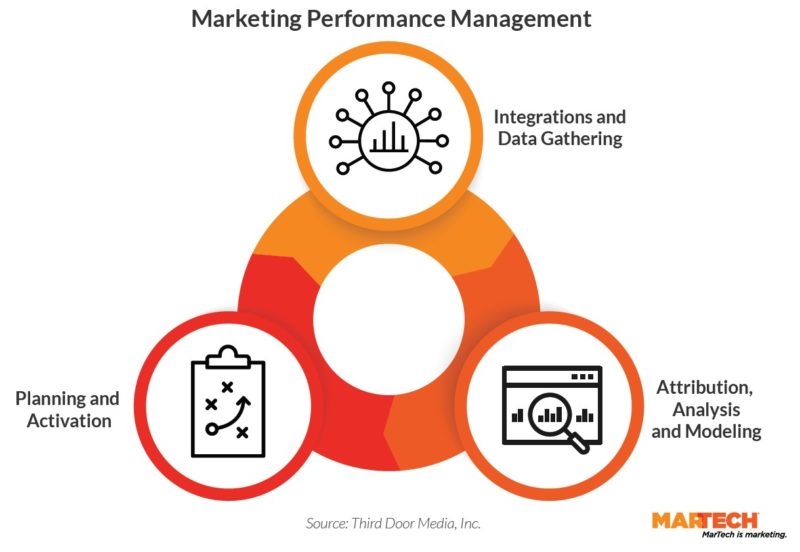MPM’s help marketers allocate future spend and bring it in line with business goals.
One of marketing’s greatest challenges is proving its value to the business. Without demonstrable proof that marketing initiatives are driving business results, marketers’ budgets are easy pickings for leaders seeking to improve profitability or just keep the business afloat during challenging times.
And it’s not just marketing department jobs and media budgets that are at stake. Cutbacks in marketing investments often backfire. They can retard the velocity of sales, stunt the company’s brand development, jeopardize relations with customers and create opportunities for competitors to gain market share.
Though it’s been a perennial issue for CMOs, the pressure to justify their budgets to C-suite colleagues has never been more intense. Seventy-one percent of B2C marketing executives expected that demonstrating the value of marketing to the CEO, CFO and the board would be “very challenging” or “extremely challenging” in 2022, a Forrester survey found.

Gauging the relative success of each of your marketing tactics is important no matter which way the economic winds are blowing. But when budgets are tight, as they are now with the current economic uncertainty, the prospect of eliminating waste is especially resonant.
The dawn of digital media promised a brighter future. One in which we could look at every sale and determine which touchpoints were effective at delivering ROI and which represented wasted spend. It’s not simple or straightforward, but we’re getting closer to realizing the promise, despite the headwinds, which include the pending deprecation of cookies and the need for compliance with restrictive, and often contradictory, privacy regulations.
Better, more powerful tools
Attribution — the practice of assigning weight to every touchpoint in a marketing campaign based upon its contribution to revenues — is not new. But the breadth and scope of available marketing attribution tools today exceed what we could have imagined just a few years ago.
The proliferation of APIs and integrations now enables marketers to pull together data of a wide range of types from myriad sources, applying machine learning and sophisticated algorithms to compare and make sense of the information.
These advances, along with business analytics technologies, let marketers get a more holistic view of their programs, regardless of channel, platform or silo. Even better, many tools now glean insights from data to model different scenarios and predict possible future outcomes, empowering marketers to confidently make budget allocation decisions.
Together, these technologies enable marketing performance management (MPM). There is no consensus on the moniker for this type of solution. Some refer to it as “marketing performance measurement” or “marketing resource management” (MRM). We prefer “marketing performance management,” which encapsulates both the attribution aspect (performance measurement) as well as the bigger picture function of using data and technology to assess bottom-line results and make decisions about future spend (performance management).
Like other marketing software solutions, marketing performance management can be achieved with an integrated platform or by assembling a “stack” of point solutions to do the job.
An MPM platform employs statistical modeling and machine learning to holistically evaluate the performance of a company’s marketing initiatives on bottom-line impact. Its purpose is to help marketers allocate future spend and bring it in line with business goals.
These tools feature attribution models that gauge the impact of each marketing touch a buyer encounters on a purchase journey and beyond. Additionally, MPM platforms use data, algorithms and machine learning models to predict future outcomes based on historical data and scenario building.
Integrated platforms have several advantages, including:
- Seamless sharing of data between modules.
- Built-in functionality for reconciling data from disparate sources.
- A consistent user interface.
- One vendor to contact for assistance with the implementation and support should they be necessary.
Point solution stacks also have advantages. Marketers select best-of-breed applications and have the flexibility of swapping out those applications should another with better features become available.
Stacks have challenges, too. Sharing data between applications can present issues, although connecting applications via APIs has gotten much easier in recent years. Interfaces are unique to each solution, meaning users must learn multiple navigation schemes and means of accomplishing their tasks. And terminology used by vendors may be different, creating a Tower of Babel within your marketing department.
Even measuring just digital media is complicated because data from many sources must be combined and normalized and normalized for an apples-to-apples comparison. The task is even more difficult when you include data from walled gardens like Facebook, Google, Amazon and Apple that target ads to logged-in users, limiting the data advertisers get about their campaigns and the users that interact with them.
Because of these phenomena, marketers are turning to third-party tools that aren’t tied to any particular medium or channel. These solutions ingest data from every channel and aggregate it to give marketers insights and predictions to apply to future campaigns.
Privacy and the deprecation of cookies
Advertisers and marketers, along with the martech vendors that serve them, must also cope with regulatory and technological efforts to safeguard people’s privacy. Consumers’ growing awareness about how their personal information is collected and used has resulted in a backlash against some of the ways online marketers gather data.
Governments enacted privacy regulations like the European Union’s General Data Privacy Regulation and California’s Consumer Privacy Act both of which govern the collection and use of customer data.
Apple, Google and Firefox have or will significantly curtail others from tracking customer behavior by eliminating third-party cookies, i.e. tracking files put on a user’s computer by companies other than the one operating the site they’re browsing.
Online advertising, since its inception, has used cookies to enable analytics, ad targeting and tracking. Transitioning to another methodology for accomplishing those tasks is a vexing challenge for the ad tech business and those that need to prove the performance of their marketing efforts.
For this reason, companies offering MPM have been hard at work developing solutions to facilitate measurement without relying on third-party cookies, personally-identifiable information or other information that might run afoul of privacy-oriented changes.
Marketers recognize the need for MPM
Last year, 38% of B2C marketing decision-makers said “they will focus on the implementation of new systems and technologies to support their organization’s business strategy” over the next two years, according to a Forrester survey. The company’s analysts note that “technology becomes even more important when you need to measure how marketing drives business value and distribute insights across the entire organization.”
Marketing performance management tools aim to address this need. They provide visibility into performance across online and offline channels and promise to enable marketers to drive more revenue from the same spend or reduce budget while obtaining the same results.
The post What is marketing performance management and how can it help you? appeared first on MarTech.
(44)
Report Post





